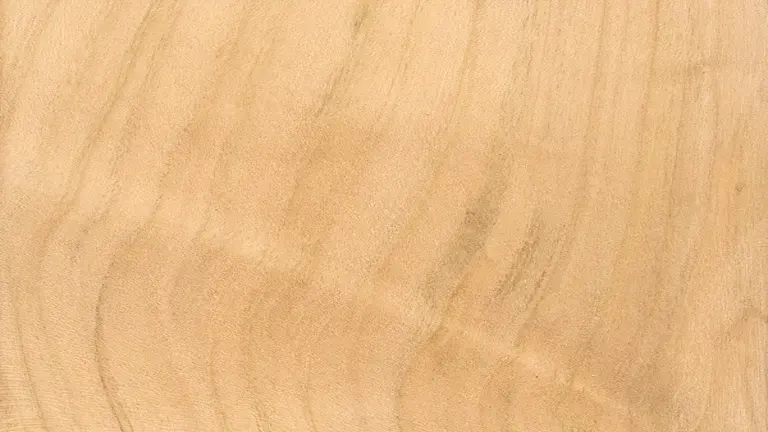Cherry Plum Lumber
- August 3, 2023
- 1 comment
Cherry Plum lumber is obtained from the Prunus cerasifera tree, a species popularly known as cherry plum or myrobalan plum. This unique wood possesses several desirable qualities that make it a sought-after material in woodworking. One of its most notable features is its alluring appearance, with heartwood ranging from light to medium reddish-brown, often accentuated by darker streaks.

The fine to medium texture and generally straight grain pattern, occasionally interlocked, further add to its visual appeal. Cherry Plum lumber’s moderate durability, displaying good resistance to decay and insect attacks, makes it suitable for various indoor applications. Woodworkers value Cherry Plum lumber for its workability with both hand and machine tools, allowing for the production of smooth surfaces and intricate designs.
Despite its density, it can be effectively shaped and fashioned, though it may have a moderate blunting effect on cutting edges. This versatile wood finds common use in furniture making, cabinetry, turned objects, and other small specialty wood items. However, due to its limited distribution in native regions of Southeast Europe and Southwest Asia, as well as parts of North America, Cherry Plum lumber might not be as readily available as more common hardwoods, potentially affecting its pricing and sourcing. To ensure its sustainability and conservation, responsible logging and forest management practices are essential to protect and maintain the population of Cherry Plum trees, ensuring that this charming wood remains accessible for future generations of craftsmen and artisans.
| Common Name(s) | Cherry Plum, Myrobalan Plum |
|---|---|
| Scientific Name | Prunus cerasifera |
| Distribution | Native to Southeast Europe and Southwest Asia. It can also be found in parts of North America. |
| Tree Size | 25-40 feet tall and 1-2 feet in diameter. |
| Average Dried Weight | Approximately 38 lbs/ft3 (610 kg/m3) |
| Specific Gravity | 0.61-0.62 |
| Janka Hardness | 1,210 lbf (5,380 N) |
| Modulus of Rupture | 16,090 lbf/in2 (111.0 MPa) |
| Elastic Modulus | 1,756,000 lbf/in2 (12.10 GPa) |
| Crushing Strength | 8,700 lbf/in2 (59.9 MPa) |
| Shrinkage | Radial: 3.8%, Tangential: 7.5%, Volumetric: 12.9%, Average dried weight: 0.62 g/cm3 (38.7 pcf) |
Appearance and Properties:
Color/Appearance:
Cherry Plum lumber’s heartwood displays a captivating range of colors, varying from light to medium reddish-brown, often accompanied by darker streaks, giving it an attractive and visually interesting appearance. The sapwood, in contrast, is lighter in color and distinct from the heartwood, creating a pleasing contrast in certain applications. Occasional gum pockets or knots may also be present, adding character and uniqueness to the wood’s overall look.


Grain/Texture:
Cherry Plum lumber features a fine to medium texture, contributing to its smooth and polished appearance. The wood typically showcases a straight grain pattern, which may occasionally display interlocked patterns. This grain structure enhances the wood’s aesthetic appeal and facilitates ease of working during woodworking projects.
Rot Resistance:
Cherry Plum lumber possesses moderate durability and exhibits commendable resistance to decay and insect attacks. Although not classified as highly rot-resistant, the wood is well-suited for various indoor applications where it is less exposed to harsh environmental conditions.
Workability:
Woodworkers find Cherry Plum lumber to be highly workable, both with hand tools and machine tools. It responds well to cutting, shaping, and joinery, enabling the production of finely crafted pieces with smooth surfaces and intricate detailing. However, due to its density, it may have a moderate blunting effect on cutting edges, necessitating periodic sharpening during extended woodworking sessions.
Odor:
Cherry Plum lumber does not emit any distinct or characteristic odor, making it a neutral option for projects where odor could be a concern.
Allergies/Toxicity:
While there have been no specific reports of allergic reactions to Cherry Plum lumber, it is essential to handle any wood dust with caution. Like with most wood species, inhalation or contact with wood dust can cause respiratory and skin irritation. Adequate safety measures, such as wearing appropriate protective gear, should be observed during woodworking activities.
Pricing/Availability:
Cherry Plum lumber may not be as widely available as more common hardwoods due to its limited distribution. As a result, sourcing this wood might require more effort and may come at a higher cost than readily available alternatives.
Sustainability:
Cherry Plum trees are not as abundant as some other commercially popular hardwood species. To ensure the sustainability of this resource, responsible logging and forest management practices are crucial. This involves promoting replanting efforts, protecting natural habitats, and adhering to sustainable harvesting practices.
Common Uses:
Cherry Plum lumber finds widespread use in various woodworking projects. Its attractive appearance and moderate durability make it a preferred choice for furniture making, where it can be utilized for crafting elegant pieces such as cabinets, tables, and chairs. Additionally, it is well-suited for turned objects like bowls, vases, and decorative items. The wood’s unique characteristics also make it a popular choice for small specialty wood items.


FAQs:
- Is Cherry Plum lumber suitable for outdoor use?
While it possesses some natural resistance to decay, it is not typically recommended for prolonged outdoor applications due to its moderate durability. - Does Cherry Plum lumber have any special odor or smell?
No, the wood is odorless. - Can Cherry Plum lumber cause allergies?
As with any wood dust, it may cause respiratory and skin irritation, so proper precautions should be taken when handling it. - Is Cherry Plum lumber readily available?
It may not be as readily available as more common hardwoods, and sourcing it might require some effort. - Is Cherry Plum lumber sustainable?
Sustainable practices are crucial to maintain the population of Cherry Plum trees, given its limited distribution.






[…] when burned? Absolutely! Different types of wood produce different fragrances when burned. E.g, cherry Wood emits a sweet scent, while pine can give off a refreshing, forest-like […]
Benefits of Burning Firewood 2023 - Forestry.com - Postetzwelz
September 18, 2023 3:13 am